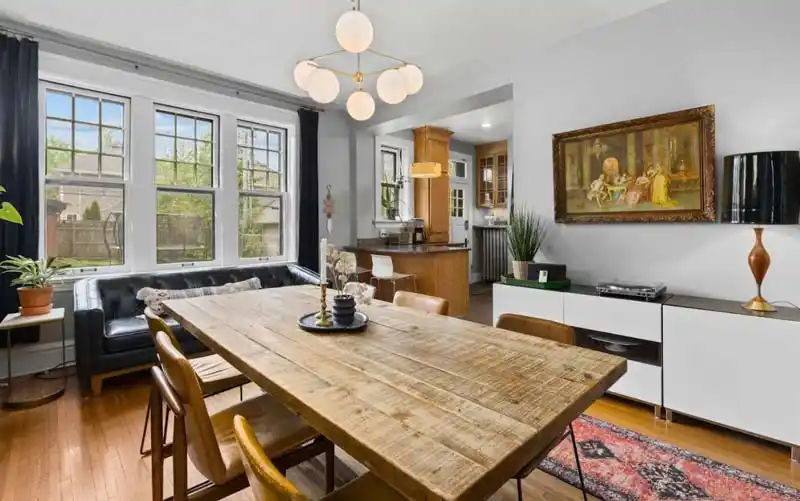
Are you on the brink of transforming your home? As a homeowner ready to embark on a journey of vivid color, there’s no denying the enchantment that house painting can bring to your living space. A fresh layer of paint has the ability to breathe new life into your home, but before you plunge into the realm of hues, it’s crucial to weigh various considerations.

In this blog post, we’ll delve into what you need to contemplate when making significant paint color changes in your home, including the possibility of an extra coat of paint or a layer of primer when transitioning from very dark to very light colors, or vice versa.
1. Your Unique Style and Vision
At the heart of your paint color journey lies your distinctive style and vision. What atmosphere do you aspire to cultivate in each room? Are you drawn to vibrant, daring colors, or do you lean towards subtle, neutral shades?
Your personal preferences should steer your color choices, ensuring that your home becomes a canvas for your individuality to shine through.
2. Setting the Mood Right
Colors have the remarkable power to evoke emotions and set the mood within a room. Before picking up the paintbrush, contemplate the emotions you wish to stir in each space. Here are a few common associations:

Calm and Tranquil: Soft blues, greens, and pastels can create an aura of serenity, ideal for bedrooms or relaxation spaces.
Vibrant and Energetic: Dynamic shades like reds, oranges, and yellows infuse vigor and vitality into a room, making them perfect for home offices or workout areas.
Timeless and Classic: Neutrals like grays, beiges, and whites provide an enduring, adaptable backdrop that complements various styles, imparting an open and spacious feel.
Cozy and Inviting: Warm colors like rich reds, deep browns, and warm oranges cocoon a room in comfort, making them ideal for living areas and dining spaces.
Elegant and Refined: Deep, muted tones like navy blues, charcoal grays, and regal purples can bestow an air of sophistication and refinement, lending themselves perfectly to formal spaces.
Remember the function of each room and how different colors can either enhance or diminish its purpose.
3. Understanding Lighting Conditions
The quality of lighting in your home significantly influences how colors appear. Natural light can cause colors to shift in appearance throughout the day, while artificial lighting also plays a role.
To prevent any unexpected surprises once the paint is on the walls, conduct tests with paint samples in different lighting conditions. This step is vital, particularly when transitioning from very dark to very light colors, or vice versa.
4. Existing Architectural Features

Respect the architectural features already present in your home, such as crown molding, trim, and built-in shelving. These elements can be accentuated or subdued through your color choices.
For example, painting trim in a contrasting color can make it pop as a decorative feature, whereas using the same color as the walls can create a harmonious, minimalistic look.
5. Cohesion and Flow
While expressing your unique style in each room is essential, it’s equally crucial to ensure that your chosen colors create cohesion and flow throughout your home. Contemplate how the colors in adjoining rooms or open-concept spaces will harmonize.
One approach to fostering harmony is to select a cohesive color palette or complementary colors, fostering a sense of continuity while allowing individual rooms to maintain their distinct character.
6. Long-Term Plans
Reflect on your long-term plans for your home. Are you planning to stay for many years or anticipate selling in the near future?
If you intend to remain in your home, you have more freedom to explore bold and personalized color choices. However, if you plan to sell, it’s often prudent to opt for neutral tones that appeal to a broader range of potential buyers.
7. Testing Before Committing
The most pivotal step in the process of making significant paint color changes is testing your choices before committing. Paint a small section of your wall with the chosen color to observe how it interacts with your specific space, lighting, and existing decor.
8. Additional Coats or Primer
Transitioning from very dark to very light colors or vice versa may necessitate an additional coat of paint or a layer of primer. Dark colors have a stronger presence and can show through lighter shades, while very light colors may struggle to cover dark backgrounds effectively.
Priming the walls with a high-quality primer can create a uniform base, allowing the new color to shine vibrantly. Additionally, applying an extra coat of paint ensures a smooth, even finish.
9. Professional Expertise
While the prospect of a DIY painting project may be alluring, seeking professional guidance can be invaluable. A professional painting contractor, such as Malone Painting, can provide expert advice on color selection, finishes, and the necessity for additional coats or primer.
In conclusion, making substantial paint color changes in your home is a thrilling journey of transformation. By contemplating your style, desired mood, lighting, architectural elements, flow, long-term plans, and the need for extra coats or primer, you can make informed choices resulting in a stunning makeover. With careful consideration and the possibility of professional assistance, your home can become a true reflection of your personality, all through the captivating medium of house painting.
We use only the best paints and materials, and we are always up-to-date on the latest painting techniques.